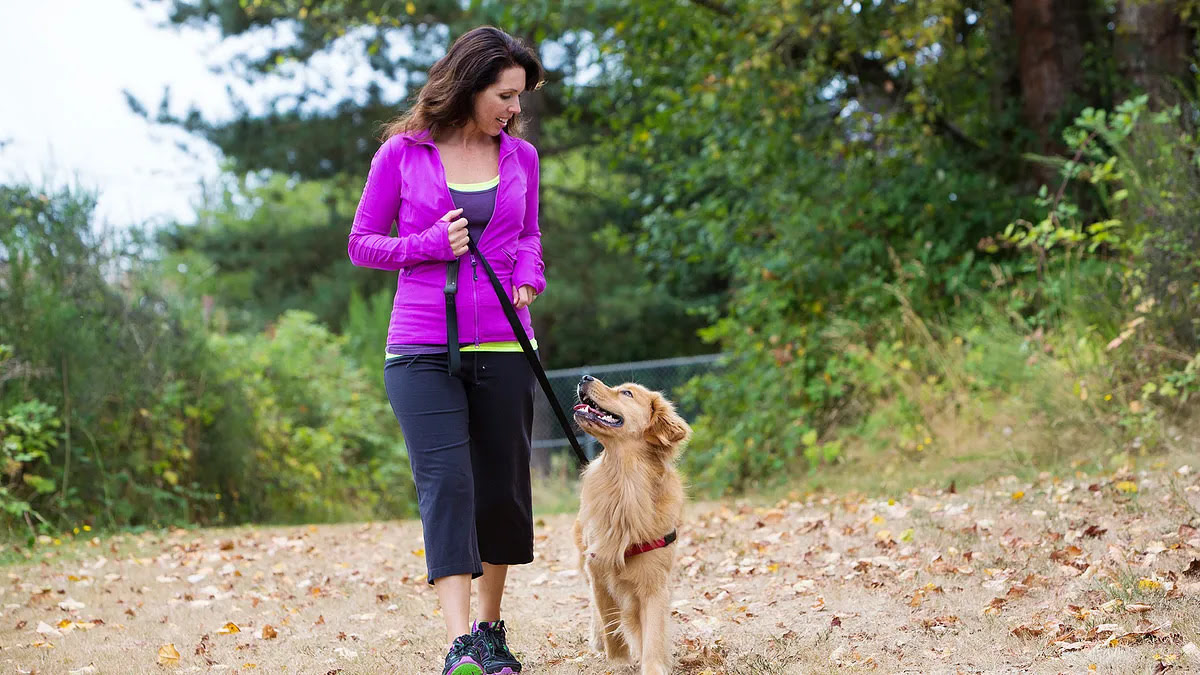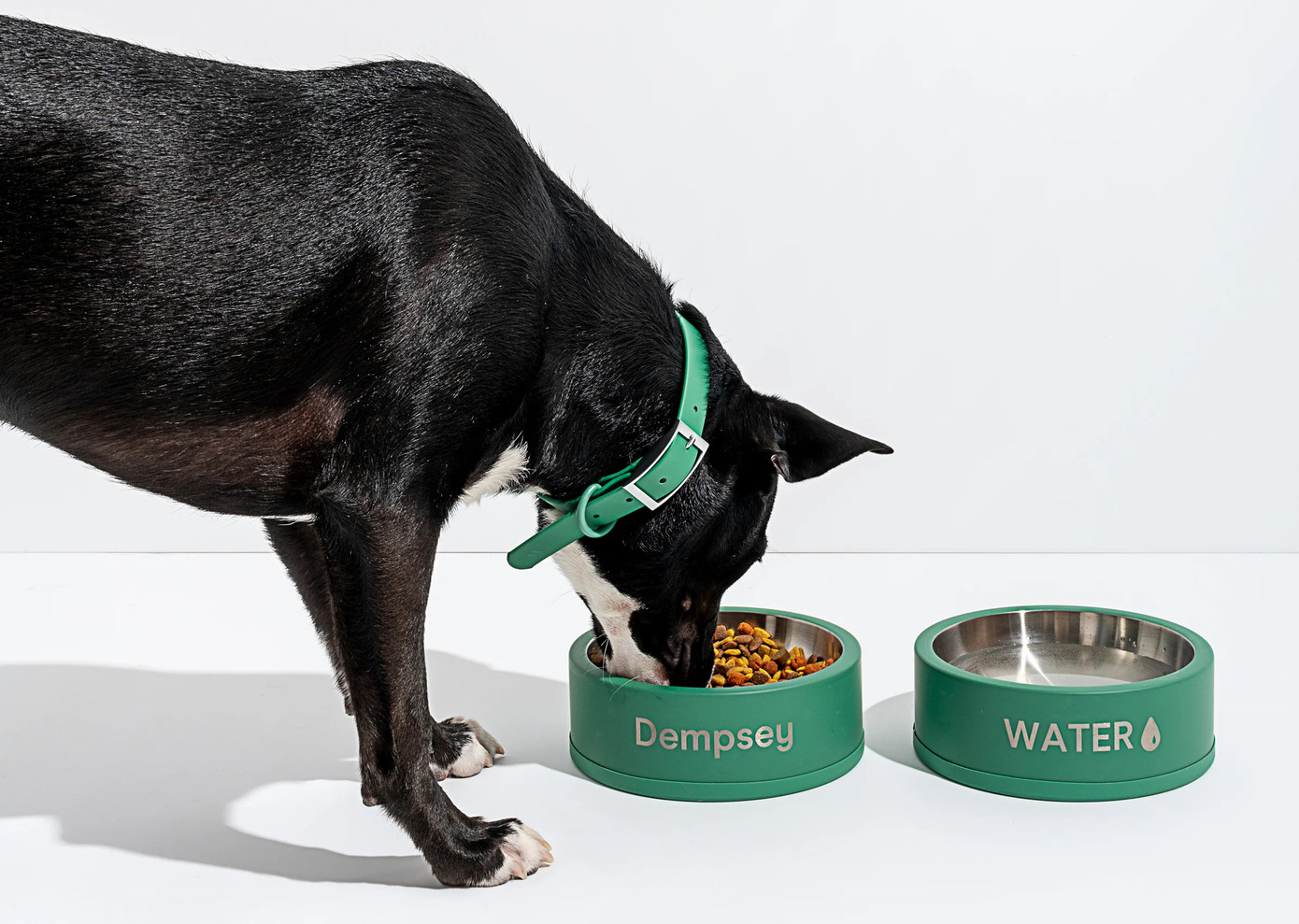Home>Health & Wellness>Common Health Issues>Muscular and Joint Health>What Are The Signs That A Dog Has Arthritis In His Legs


Muscular and Joint Health
What Are The Signs That A Dog Has Arthritis In His Legs
Modified: February 21, 2024
Learn the signs of arthritis in a dog's legs and how to support their muscular and joint health. Discover effective ways to manage and alleviate discomfort.
(Many of the links in this article redirect to a specific reviewed product. Your purchase of these products through affiliate links helps to generate commission for Pawsomeoldies.com, at no extra cost. Learn more)
Table of Contents
Introduction
Arthritis is a common condition that affects not only humans but also our beloved canine companions. As responsible pet owners, it's crucial to be aware of the signs and symptoms of arthritis in dogs, particularly in their legs, as it can significantly impact their mobility and overall quality of life. Understanding the early indicators of this condition is essential for prompt intervention and management.
Dogs are known for their boundless energy and enthusiasm, often displaying an eagerness to explore the world around them. However, as they age, they may experience joint-related issues, including arthritis, which can hinder their ability to engage in physical activities. Arthritis in a dog's legs can manifest in various ways, and being attuned to these signs is pivotal for providing the necessary care and support.
In this comprehensive guide, we will delve into the intricacies of arthritis in dogs, focusing on the specific signs that indicate its presence in their legs. By gaining a deeper understanding of this condition and its manifestations, pet owners can take proactive measures to ensure their furry companions lead comfortable and fulfilling lives. Let's embark on this enlightening journey to uncover the nuances of arthritis in dogs and equip ourselves with the knowledge to recognize and address its impact on our canine friends.
Understanding Arthritis in Dogs
Arthritis, also known as osteoarthritis or degenerative joint disease, is a prevalent condition that affects dogs of all breeds and ages. It primarily involves the inflammation and degeneration of the joints, leading to discomfort, stiffness, and reduced mobility. This chronic ailment can significantly impact a dog's overall well-being, causing varying degrees of pain and hindering their ability to engage in physical activities.
The underlying causes of arthritis in dogs are multifaceted. While it commonly occurs in senior dogs due to the natural wear and tear of their joints over time, it can also develop in younger dogs as a result of genetic predisposition, joint injuries, or developmental issues. Additionally, certain factors such as obesity, poor nutrition, and overexertion can exacerbate the onset and progression of arthritis in dogs.
The hallmark of arthritis is the breakdown of cartilage, the smooth tissue that cushions the ends of bones within a joint. As this protective cartilage deteriorates, the bones may begin to rub against each other, leading to pain, inflammation, and the formation of bony outgrowths known as osteophytes. Consequently, the affected joints become swollen, tender, and less flexible, impeding a dog's mobility and causing discomfort during movement.
It's important to recognize that arthritis in dogs is a progressive condition that requires vigilant attention and proactive management. While it cannot be cured, early detection and appropriate interventions can significantly alleviate a dog's discomfort and enhance their quality of life. By understanding the underlying mechanisms and implications of arthritis in dogs, pet owners can cultivate a deeper sense of empathy and awareness, fostering a supportive environment for their furry companions.
In the subsequent sections, we will explore the specific signs and symptoms that indicate the presence of arthritis in a dog's legs, delve into the diagnostic process, and elucidate the various treatment options available to alleviate the impact of this condition. This comprehensive approach aims to empower pet owners with the knowledge and resources necessary to identify, address, and mitigate the effects of arthritis in their beloved canine companions.
Signs and Symptoms of Arthritis in a Dog's Legs
Recognizing the signs and symptoms of arthritis in a dog's legs is pivotal for early intervention and effective management of this debilitating condition. While dogs are adept at masking discomfort, several indicators can shed light on the presence of arthritis in their legs. It's essential for pet owners to be attentive to these manifestations, as they can significantly impact a dog's mobility and overall well-being.
-
Limping or Favoring a Leg: One of the most noticeable signs of arthritis in a dog's legs is limping or favoring one leg over the others. This is often indicative of pain or discomfort in the affected joint, prompting the dog to redistribute their weight to alleviate the pressure on the affected limb.
-
Stiffness and Reduced Mobility: Arthritic dogs may exhibit stiffness, particularly after periods of rest or inactivity. They may struggle to rise from a lying position or display reluctance to engage in physical activities such as running or jumping. Reduced mobility is a key indicator of joint discomfort and warrants attention.
-
Lameness: Dogs with arthritis in their legs may display varying degrees of lameness, characterized by an altered gait or an uneven distribution of weight while walking. This can manifest as a subtle limp or a more pronounced hobbling motion, signaling underlying joint issues.
-
Muscle Atrophy: Over time, the muscles surrounding an arthritic joint may undergo atrophy due to reduced use and mobility. This can result in a visibly smaller or weaker muscle mass in the affected leg, further exacerbating the dog's discomfort and hindering their physical capabilities.
-
Reluctance to Engage in Physical Activities: Arthritic dogs may exhibit a reluctance to participate in activities they once enjoyed, such as playing fetch, going for walks, or navigating stairs. This behavioral change is often attributed to the discomfort and pain associated with movement, prompting the dog to withdraw from strenuous or high-impact activities.
-
Visible Joint Swelling and Heat: In advanced stages of arthritis, the affected joint may exhibit swelling, warmth, or tenderness upon palpation. These visual and tactile cues indicate inflammation and can be indicative of the progression of the condition.
-
Behavioral Changes: Dogs experiencing joint pain due to arthritis may display subtle behavioral changes, such as irritability, restlessness, or increased vocalization. These manifestations serve as a means of communication, signaling the dog's discomfort and the need for attention and care.
By being attuned to these signs and symptoms, pet owners can promptly seek veterinary evaluation and implement appropriate measures to alleviate their dog's discomfort and enhance their quality of life. Early detection and proactive intervention are instrumental in mitigating the impact of arthritis in a dog's legs, fostering a supportive and nurturing environment for our beloved canine companions.
Diagnosing Arthritis in Dogs
Diagnosing arthritis in dogs involves a comprehensive assessment that encompasses clinical evaluation, diagnostic imaging, and in some cases, laboratory tests. As arthritis primarily affects the joints, a thorough examination of a dog's mobility, gait, and joint functionality is crucial in identifying the presence and severity of this condition.
During the initial veterinary consultation, the veterinarian will conduct a physical examination to evaluate the dog's range of motion, joint flexibility, and any signs of discomfort or pain. Observing the dog's gait and movement patterns provides valuable insights into the affected joints and aids in pinpointing areas of concern. Additionally, palpation of the joints allows the veterinarian to assess for swelling, warmth, and tenderness, indicative of inflammation and joint degeneration.
Diagnostic imaging plays a pivotal role in confirming the presence of arthritis and assessing its extent. X-rays are commonly employed to visualize the internal structures of the joints, revealing any abnormalities such as joint space narrowing, bone spurs, or changes in bone density. These radiographic findings provide valuable diagnostic information, enabling the veterinarian to formulate an appropriate treatment plan tailored to the dog's specific needs.
In some instances, advanced imaging modalities such as MRI or CT scans may be recommended to obtain a more detailed assessment of the affected joints, particularly in cases where the standard X-rays yield inconclusive results or when a more comprehensive evaluation is warranted.
Laboratory tests, including blood work and joint fluid analysis, may be conducted to rule out other potential causes of joint discomfort and to assess for underlying systemic conditions that may contribute to the development of arthritis. Blood tests can help identify markers of inflammation and assess the overall health status of the dog, while joint fluid analysis aids in evaluating the composition of the synovial fluid within the affected joint, providing valuable diagnostic insights.
By integrating these diagnostic approaches, veterinarians can accurately diagnose arthritis in dogs, determine the severity of the condition, and devise a tailored management plan to alleviate the dog's discomfort and enhance their quality of life. Early diagnosis is instrumental in implementing timely interventions, thereby mitigating the progression of arthritis and fostering a supportive environment for our canine companions.
Treatment Options for Arthritic Dogs
The management of arthritis in dogs encompasses a multifaceted approach aimed at alleviating discomfort, enhancing mobility, and improving the overall quality of life for our beloved canine companions. While arthritis cannot be cured, various treatment options are available to mitigate its impact and provide tailored care for arthritic dogs.
1. Medications:
-
Non-Steroidal Anti-Inflammatory Drugs (NSAIDs): These medications are commonly prescribed to reduce inflammation, alleviate pain, and improve joint mobility in arthritic dogs. It's essential to administer NSAIDs under veterinary supervision to monitor for potential side effects and ensure their safe and effective use.
-
Pain Modifiers: Certain medications, such as tramadol and gabapentin, may be prescribed to manage chronic pain associated with arthritis. These pain modifiers help enhance a dog's comfort and reduce the impact of joint-related discomfort.
2. Nutritional Supplements:
-
Glucosamine and Chondroitin: These supplements are known for their potential to support joint health and mitigate the progression of arthritis in dogs. They aid in preserving cartilage integrity and promoting joint lubrication, contributing to enhanced mobility and reduced discomfort.
-
Omega-3 Fatty Acids: Incorporating omega-3 fatty acid supplements into a dog's diet can exert anti-inflammatory effects, potentially alleviating joint inflammation and supporting overall joint function.
3. Physical Therapy and Exercise:
-
Low-Impact Exercise: Engaging arthritic dogs in low-impact activities such as swimming or gentle walks can help maintain joint flexibility, strengthen supporting muscles, and prevent further joint degeneration.
-
Physical Rehabilitation: Veterinary-supervised physical therapy sessions, including massage, range-of-motion exercises, and hydrotherapy, can contribute to improved joint mobility and enhanced overall well-being for arthritic dogs.
4. Weight Management:
- Maintaining a healthy weight is crucial for arthritic dogs, as excess body weight places added strain on the joints, exacerbating discomfort and hindering mobility. A balanced diet and portion control are essential components of effective weight management for arthritic dogs.
5. Environmental Modifications:
- Providing supportive bedding and ramps to facilitate easy access to elevated surfaces can alleviate joint stress and enhance a dog's comfort in their living environment.
6. Surgical Interventions:
- In severe cases of arthritis, surgical options such as joint replacement or arthroscopic procedures may be considered to address advanced joint degeneration and alleviate persistent discomfort.
By integrating these treatment modalities, pet owners can collaborate with veterinarians to devise a comprehensive care plan tailored to the specific needs of their arthritic dogs. This holistic approach aims to mitigate discomfort, enhance mobility, and foster a supportive environment that prioritizes the well-being of our canine companions.
Preventing Arthritis in Dogs
Preventing arthritis in dogs encompasses proactive measures aimed at promoting joint health, minimizing risk factors, and fostering overall well-being to mitigate the onset and progression of this debilitating condition. While certain factors contributing to arthritis, such as genetics and age, are beyond our control, there are several strategies that pet owners can implement to reduce the likelihood of their dogs developing arthritis.
1. Balanced Nutrition:
Providing a well-balanced diet tailored to a dog's specific nutritional needs is fundamental in promoting overall health and supporting joint function. High-quality dog food enriched with essential nutrients, including omega-3 fatty acids, glucosamine, and chondroitin, can contribute to joint health and mitigate the risk of arthritis development.
2. Weight Management:
Maintaining a healthy weight is pivotal in preventing arthritis in dogs, as excess body weight places undue stress on the joints, leading to accelerated wear and tear. Implementing portion control, regular exercise, and monitoring calorie intake can help prevent obesity and reduce the strain on a dog's joints, thereby minimizing the risk of arthritis.
3. Regular Exercise:
Engaging dogs in regular, moderate exercise tailored to their age and breed can promote joint flexibility, muscle strength, and overall physical well-being. Low-impact activities such as walking, swimming, and gentle play can help maintain joint mobility and prevent the onset of arthritis by promoting healthy joint function.
4. Joint Supplements:
Incorporating joint-supporting supplements, such as glucosamine, chondroitin, and omega-3 fatty acids, into a dog's daily routine can aid in preserving joint health and mitigating the progression of arthritis. These supplements contribute to cartilage integrity, joint lubrication, and anti-inflammatory effects, promoting optimal joint function and reducing the risk of arthritis.
5. Regular Veterinary Check-ups:
Scheduling routine veterinary examinations allows for early detection of potential joint issues and enables proactive interventions to maintain joint health. Veterinarians can provide valuable guidance on preventive measures, assess joint functionality, and recommend tailored strategies to support a dog's joint well-being.
6. Environmental Modifications:
Creating a supportive living environment for dogs, including providing comfortable bedding, minimizing slippery surfaces, and incorporating ramps or steps for easy access to elevated areas, can reduce joint stress and minimize the risk of joint-related injuries that may predispose dogs to arthritis.
By integrating these preventive measures into a dog's daily care regimen, pet owners can play a proactive role in promoting joint health and minimizing the risk of arthritis development in their beloved canine companions. Prioritizing preventive strategies fosters a nurturing environment that supports overall well-being and enhances the quality of life for dogs, ensuring they can lead active, comfortable, and fulfilling lives free from the debilitating effects of arthritis.
Conclusion
In conclusion, the well-being of our canine companions is intricately intertwined with the health of their joints, and recognizing the signs of arthritis in a dog's legs is paramount for early intervention and effective management. Arthritis, a prevalent condition that affects dogs of all breeds and ages, can significantly impact their mobility, comfort, and overall quality of life. By understanding the signs and symptoms of arthritis in a dog's legs, pet owners can proactively address the challenges posed by this condition and ensure that their furry friends receive the care and support they need.
The signs of arthritis in a dog's legs, including limping, stiffness, lameness, muscle atrophy, and behavioral changes, serve as crucial indicators of joint discomfort and warrant prompt veterinary evaluation. Early detection and proactive intervention are instrumental in mitigating the impact of arthritis, fostering a supportive environment for our beloved canine companions. Through a comprehensive diagnostic process encompassing clinical evaluation and diagnostic imaging, veterinarians can accurately diagnose arthritis in dogs, determine the severity of the condition, and devise tailored management plans to alleviate discomfort and enhance the dogs' quality of life.
The treatment options for arthritic dogs, ranging from medications and nutritional supplements to physical therapy, weight management, and environmental modifications, offer a multifaceted approach to mitigating discomfort, enhancing mobility, and improving overall well-being. Additionally, preventive measures such as balanced nutrition, weight management, regular exercise, joint supplements, and environmental modifications play a pivotal role in minimizing the risk of arthritis development in dogs, promoting joint health, and fostering a nurturing environment that supports their overall well-being.
By integrating these insights and strategies, pet owners can cultivate a deeper sense of empathy and awareness, ensuring that their beloved canine companions lead comfortable, active, and fulfilling lives free from the debilitating effects of arthritis. Through vigilance, proactive care, and a commitment to promoting joint health, we can enrich the lives of our dogs and provide them with the support and compassion they deserve.











